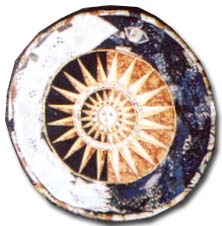a sweep net
Of all the tools that we use in the field the sweep net has long been my favourite. The sweep net is nothing but a butterfly net: It consists of a long stick attached to a hoop. The hoop is covered with a cloth mesh. The mesh is roughly conical and is quite useful to catch insects safely, and without hurting them. There is a definite technique to use the net as well. One should stand with feet firmly placed on the ground, extend the net in one hand and with a graceful sweep, brush the net through the grass. It's a bit like instructions for golf or tennis, one should follow through the 'shot', and not halt midway. The best part comes after the sweep or sweeps have been done. It's a bit like opening presents: because you never know what you're going to get. You'll see all manner of insects and spiders and worms etc, a delightful hodgepodge of organisms, that you'd never have suspected to dwell in the grass.
I went sweep-netting yesterday; I needed to catch young grasshoppers to feed some spiders. I borrowed a sweep net and headed out to the part of the university where the grass grows free. I think I spent more time watching the other organisms than catching the grasshoppers. Brilliant green spiders, angry flies, a bemused beetle, and lots of frantic ants decorated the net with every sweep.
Equally interesting were the reactions of the people who spotted me with the net. A group of school children was convinced that I was looking for snakes and they kept whispering "haavu" (snake) and pointing to me. Security guards, who usually look at me with suspicion and disapproval, now smiled at me. An old lady came ambling down the path next to me and asked what insects I was looking for, and spoke of a project by some students which involved grasshoppers, and how her garden attracts a tremendous variety of the critters. Somehow, somewhere along the way, the sweep net seems to have become a symbol for the field biologist.




<< Home